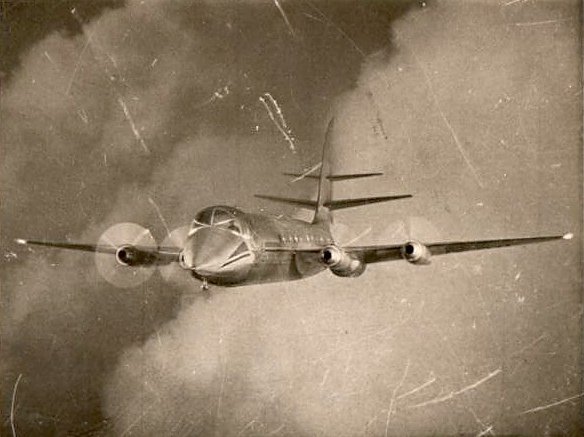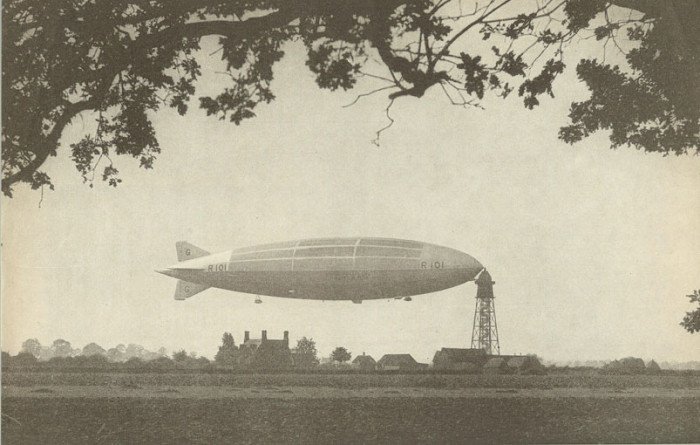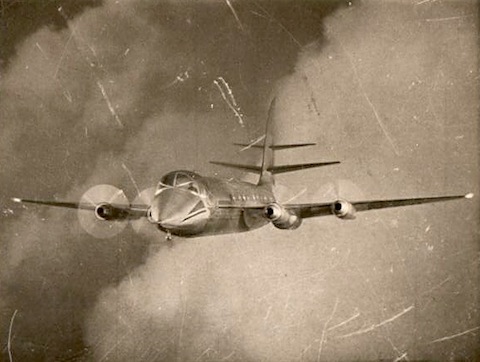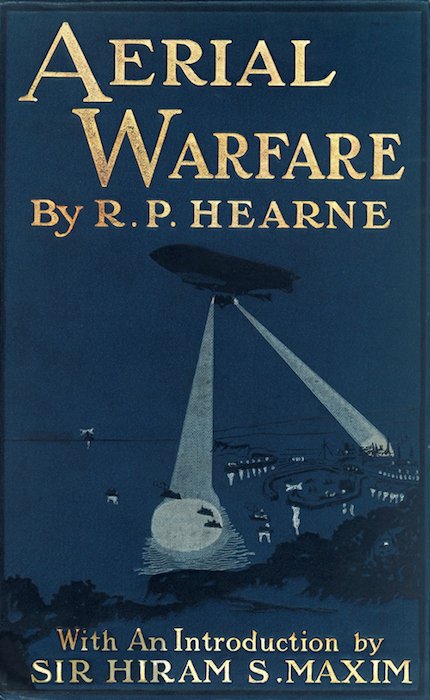[Part of a celebration of Airminded’s 10th anniversary; originally posted on 3 March 2011. Sometimes, blogging takes time. Which reminds me, there are at least two posts I need to finish writing… one day.]

A recent comment by J Campbell raised the question of whether Nevil Shute’s 1949 novel No Highway was in fact a prediction of the De Havilland Comet airliner’s metal fatigue problems, which led to two crashes (‘hull losses’, in industry parlance) in 1954. My response was that it seemed unlikely that Shute had any particular insider knowledge which could have led to such a prediction (made before the prototype had even flown) given that he had already been out of the aircraft manufacturing business for some years. (And if he did have reason to think that the Comet would have metal fatigue, why not warn de Havilland instead of writing a novel?) My own suggestion was that instead No Highway might have been loosely inspired by the R101 disaster back in 1930, a formative moment in Shute’s life. Having read the novel now, I don’t have any actual evidence for this, but there is an intriguing additional parallel which may have been overlooked (or not, I’m no Shute scholar).
In Shute’s novel — spoilers ahead — the tailplane of the (fictional) Rutland Reindeer (seen above, from the 1951 film version No Highway In The Sky) is believed by an RAE scientist named Theodore Honey to be susceptible to metal fatigue. The story revolves around the efforts of Honey and Scott, his superior at Farnborough, to prove that an earlier Reindeer crash was due to metal fatigue and so ground the Reindeer fleet before disaster strikes. The obstacles include a slapdash investigation of the previous accident, entrenched interests at the Reindeer’s manufacturer Rutland and its operator CATO, the (also fictional) Commonwealth Atlantic Transport Organisation, the novelty of Honey’s fatigue theory (inspired by recent advances in nuclear physics!), and Honey’s own diffident character and his eclectic interests, including pyramidology, British Israelism, the Second Coming (predicted for 1994), interplanetary rocket travel and spiritualism. Of which more in a moment.

Now, the R101 did not crash as a result of metal fatigue, rather from loss of lift and lack of control, which proved fatal during a violent gale over France on 4 October 1930. Forty-eight people were killed, including its captain, Flight Lieutenant Carmichael Irwin, the Air Minister, Lord Thomson, and the Director of Civil Aviation, Sefton Brancker. At the time, Shute (or Nevil Norway as he then was) was an aeronautical engineer who had helped to design the R100 (the ‘capitalist’ airship which was in heated competition with the ‘socialist’ R101). The disaster effectively marked the end of his career in airships; even though R100 was quite successful it was scrapped along with the Imperial Airship Scheme, and he was out of a job. He then went and co-founded Airspeed Ltd.
Shute’s thoughts on R101 are recorded in his autobiography, Slide Rule (London: Vintage Books, 2009 [1954]), 46:
A man’s own experiences determine his opinions, of necessity. I was thirty-one years old at the time of the R.101 disaster, and my first close contact with senior civil servants and politicians at work was in the field of airships, where I watched them produce disaster. That experience still colours much of my thinking. I am very willing to recognise the good in many men of these two classes, but a politician or civil servant is still to me an arrogant fool till he is proved otherwise.
He then goes on to propound his theory that the decent civil servants tend to be those who have independent means, because only they are willing to give truly independent advice and risk being sacked. (Of course, being civil servants, they have no skills which would enable them to get another job.) I must say that the civil servants in No Highway don’t conform well to this jaundiced view; only one is truly incompetent (the accident investigator responsible for the aforementioned slapdash report), two are the novel’s sympathetic protagonists, and the rest are either portrayed as assisting the protagonists or resisting them through legitimate technical concerns. But on the whole, Shute does seem cynical of the whole process: it works, but in the end only thanks to an intervention from the Other World.
In the novel, Honey holds a séance, with his twelve-year old daughter Elspeth as the medium. The aim is to try and help Scott find the tailplane from the first crash, which is lying somewhere in the vast Labrador forest. They will then be able to tell definitively whether it sheared off due to metal fatigue, as Honey’s theory predicts. Elspeth uses a planchette to produce various squiggles and a fragmentary phrase, ‘UNDER THE FOOT OF THE BEAR’, which does prove to reveal the location of the Reindeer’s tailplane. Shute doesn’t really address whether spiritualism is ‘true’ in the book, or whether it’s just a coincidence. But the whole episode, which is pretty much the climax of No Highway, made me think of Eileen Garrett’s R101 séance.
This took place two days after the crash (and a day after full accounts hit the press) and was held in the laboratory of the famous (and infamous) psychic investigator, Harry Price. Garrett’s spirit guide Uvani spoke through her first, and then the spirit of Flight Lieutenant Irwin, late commander of the R101 (they were actually trying to contact Arthur Conan Doyle instead). Irwin, or rather ‘Irwin’, provided an account of his (and R101’s) last moments, including technical details of why the disaster took place. According to a book Price published in 1933, Leaves From a Psychist’s Case-Book, a transcript of the séance was provided to the Air Ministry to assist in their investigations, though its existence seem not to have been publicly revealed until July 1931, well after the commission of inquiry’s report was released in March 1931. The transcript and Price’s account of the séance can be read online, along with a commentary by ‘Mr. X’, apparently Will Charlton, supply officer at R101’s Cardington base. Mr. X found that many of the statements made by ‘Irwin’ were correct, some of which were unknown at the time of the séance, and most of which were made in plausible technical language, unlikely to have been known by non-experts. For example, ‘Irwin’ said that there was ‘Severe tension on the fabric, which is chafing’; which Mr. X: thought ‘Very probable. Terms correct’. On the other hand, some remarks were deemed ‘obscure’, while others seem less impressive to me. For example, Price places great weight on ‘Irwin’s’ statement ‘Same with S.L.8 – tell Eckener‘:
THE S.L.8 HAS BEEN VERIFIED AS THE NUMBER OF A GERMAN AIRSHIP – S.L. STANDING FOR SCHÜTTE LANZ. THIS VERIFIED ONLY AFTER X HAD BEEN THROUGH COMPLETE RECORDS OF GERMAN AIRSHIPS (i.e. IT WAS NOT KNOWN TO HIM OFF-HAND). BUT IT WOULD BE KNOWN TO IRWIN. DR. ECKENER IS THE CONSTRUCTOR OF THE “GRAF ZEPPELIN.”
Well, yes, SL8 was the German airship Schütte-Lanz 8, but it wouldn’t have taken any great amount of research to come up with this: it was mentioned in the popular book by Joseph Morris, German Air Raids on Britain 1914-1918 (1925), for example. Also, ‘Irwin’ seems to imply that the same thing happened to SL8 as happened to R101. But SL8 died a peaceful death in 1917, being dismantled after a record number of missions for any Schütte-Lanz airship. So it’s a mystifying reference anyway.
While Garrett, a very well-known Irish medium, seems to have escaped accusations of fraud during her career, the same is not true of Price. And I have no independent verification that the transcript published by Price and scrutinised by Mr. X after the inquiry was in fact the same one sent to the Air Ministry just after the crash, or indeed if it was sent at all. Or, if it was, whether anyone paid it any attention. However, a Major Oliver Villiers of the Air Ministry did participate in Garrett’s later R101 séances, though whether in an official capacity I’m not sure. It’s possible that the transcript was altered to fit the inquiry findings; it’s possible that Villiers, Charlton or someone else supplied Garrett and Price with technical information, wittingly or unwittingly. There are other criticisms. But perhaps Mrs Garrett really did receive Flight Lieutenant Irwin’s final report…
All that aside, however, it seems possible to me that the real R101 séance inspired the fiction Reindeer one. Both featured ‘true’ details about an air accident, supplied by a technical näif, which were later confirmed by more scientific investigators. The parallel is not quite direct, as the Reindeer séance didn’t involve communication with dead airmen, nor did it directly reveal information about an accident. But it is, as I said, intriguing.
Image sources: Key Publishing Ltd Aviation Forums; er, Airminded.
NB: this post is glacial blogging.
![]() This work is licensed under a Creative Commons Attribution-NonCommercial-NoDerivatives 4.0 International License.
Permissions beyond the scope of this license may be available at http://airminded.org/copyright/.
This work is licensed under a Creative Commons Attribution-NonCommercial-NoDerivatives 4.0 International License.
Permissions beyond the scope of this license may be available at http://airminded.org/copyright/.






As mentioned on Twitter (but worth repeating for anyone interested), there with a number of design issues with the Lockheed 14 Super Electra’s in the 1930’s, one of which was to do with the tail. The Lockheed 14’s were used by British Airways and a number of them were lost before the war – the Lockheed 14 and the issues were one of the aircraft types I studied for my dissertation on known aircraft design flaws resulting in airliner accidents
Good point. It’s probably not necessarily to go back to the R101 for the source of Shute’s idea (and, after all, he didn’t work on it himself); a flaw in one of your designs would be the nightmare of any aircraft designer, even worse if it was so subtle that it wasn’t picked up even after a fatal crash.
Incidentally, the May 2015 issue of Fortean Times has an article by Alan Murdie (pp. 18-19) looking at recent evaluation of the R101 séance material published in Light, which suggests that there’s more to it in a spiritualistic sense than I’ve suggested. But Murdie’s article concentrates more on debunking the debunkers rather than analysing how accurate and unusual Garratt’s information about the crash was. Also, I didn’t realise that she’d had premonitions about the crash before it happened, presumably not via the spirit of the still-living Irwin, and even seems to have met Brancker in person to warn him about the airship’s (and his own) impending doom. It’s possible that she picked up some uncommon knowledge that way.